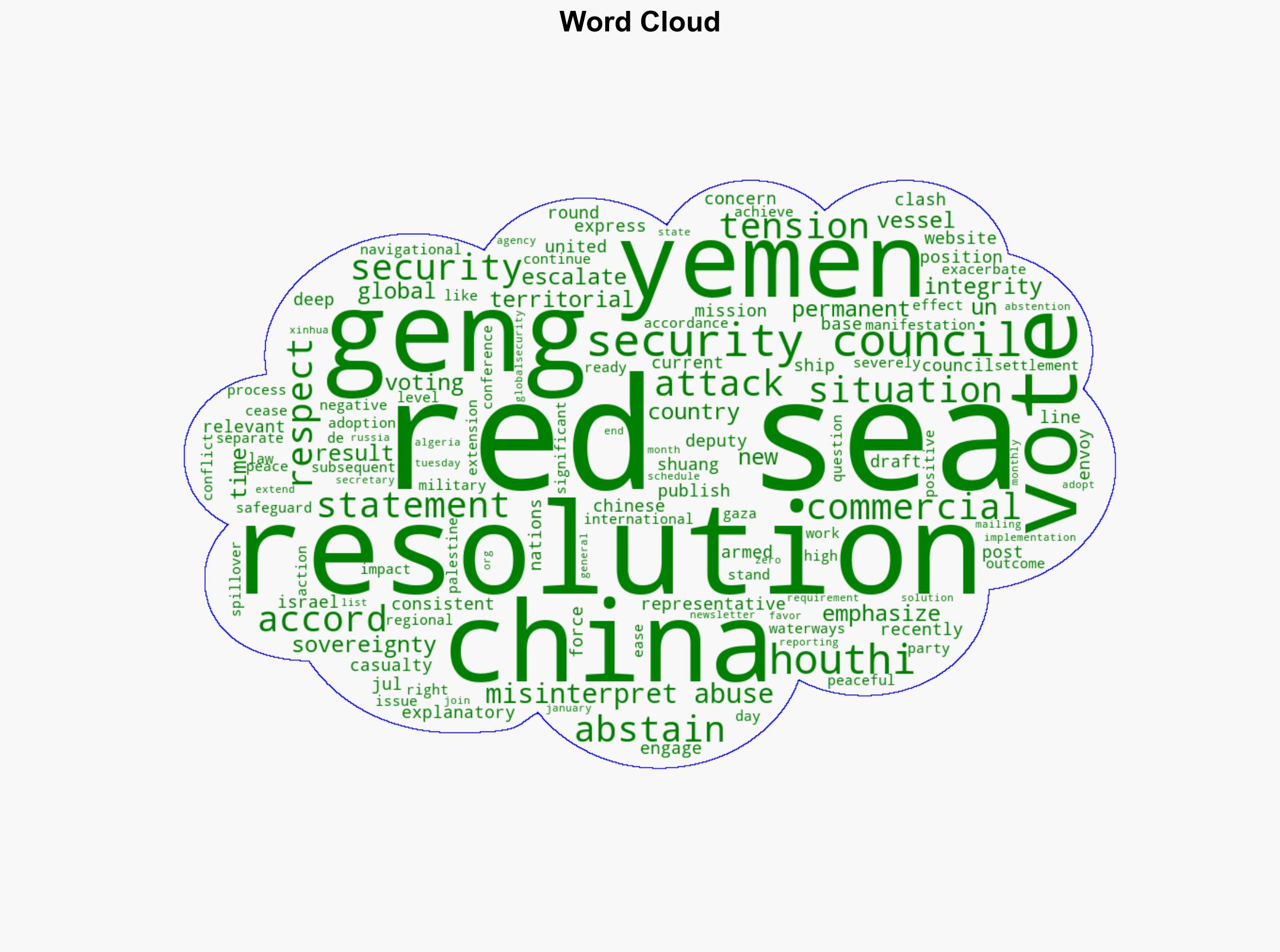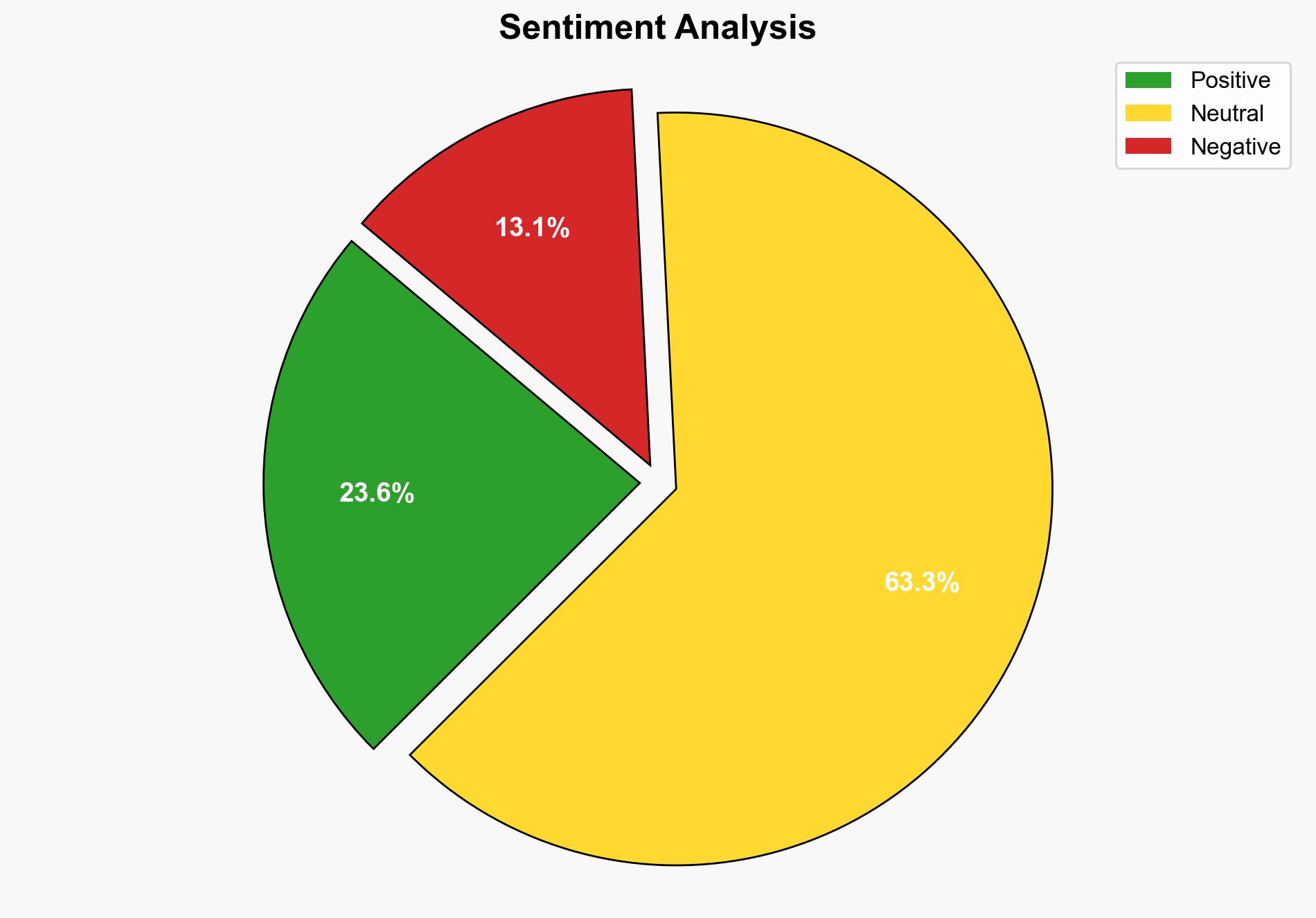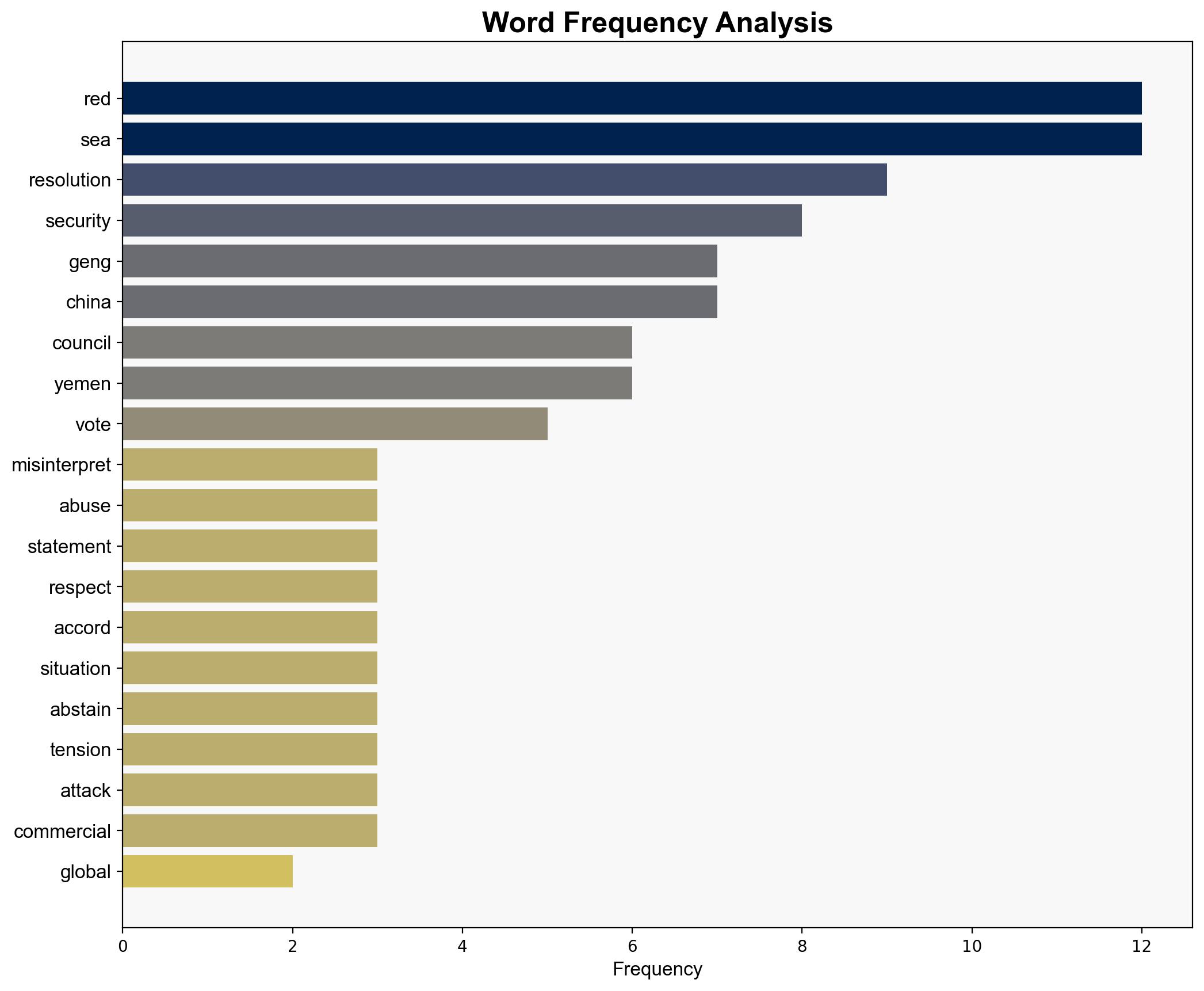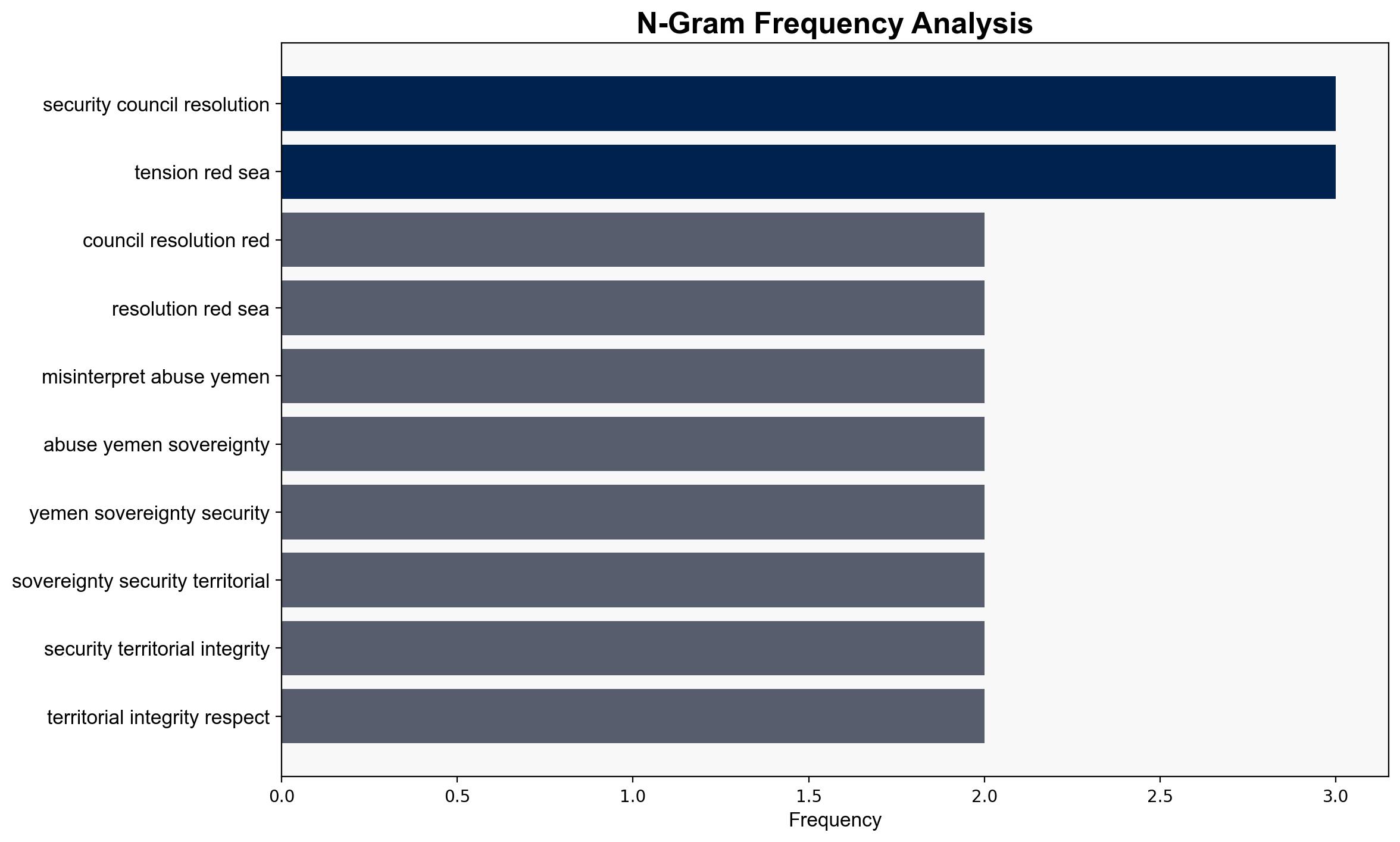Security Council’s resolution on Red Sea should not be misinterpreted or abused Chinese envoy – Globalsecurity.org
Published on: 2025-07-16
Intelligence Report: Security Council’s Resolution on Red Sea – Analysis and Implications
1. BLUF (Bottom Line Up Front)
The recent Security Council resolution concerning the Red Sea has prompted concerns from China regarding potential misinterpretation and misuse, particularly in relation to Yemen’s sovereignty. The escalation of tensions in the Red Sea, linked to the broader regional instability, necessitates careful diplomatic engagement to prevent further conflict and ensure maritime security. Recommendations include enhanced diplomatic efforts and monitoring of regional developments to prevent escalation.
2. Detailed Analysis
The following structured analytic techniques have been applied to ensure methodological consistency:
Causal Layered Analysis (CLA)
– **Surface Events**: Recent clashes between Israeli forces and Houthi armed groups, including attacks on commercial vessels, have heightened tensions.
– **Systemic Structures**: The geopolitical dynamics of the Red Sea, involving multiple state and non-state actors, complicate the security landscape.
– **Worldviews**: Divergent national interests, particularly between Western powers and regional stakeholders, influence interpretations of the resolution.
– **Myths**: Historical grievances and narratives of sovereignty and territorial integrity continue to shape regional interactions.
Cross-Impact Simulation
– Potential spillover effects from the Gaza conflict could exacerbate tensions in the Red Sea, impacting international trade routes and regional stability.
– Economic dependencies on Red Sea shipping lanes highlight the need for coordinated international responses to secure these critical waterways.
Scenario Generation
– **Best Case**: Diplomatic efforts lead to a de-escalation of tensions, with regional actors agreeing on a framework for maritime security cooperation.
– **Worst Case**: Misinterpretation of the resolution results in unilateral military actions, further destabilizing Yemen and the broader region.
– **Most Likely**: Continued diplomatic negotiations with intermittent skirmishes, maintaining a fragile status quo.
3. Implications and Strategic Risks
– The potential for increased military engagements in the Red Sea poses risks to international shipping and energy security.
– Political instability in Yemen could serve as a catalyst for broader regional conflicts, drawing in external powers.
– Cyber threats targeting maritime infrastructure could emerge as a significant vulnerability.
4. Recommendations and Outlook
- Enhance diplomatic channels to facilitate dialogue among Red Sea littoral states and external stakeholders.
- Implement monitoring mechanisms to ensure compliance with international maritime laws and prevent unilateral actions.
- Develop contingency plans for securing maritime routes in the event of heightened conflict.
5. Key Individuals and Entities
– Geng Shuang
6. Thematic Tags
national security threats, maritime security, regional stability, geopolitical analysis





